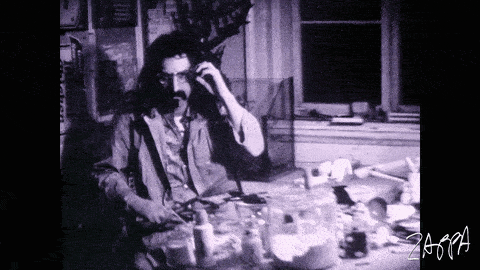As we increasingly move to digital spaces and trans-act in online economies, it’s essential that we don’t fall into habits of isolated consumption,
lest we forget there are human beings on both ends of every song: the people who make it and the people who listen to it, support it, and amplify it.
“The computer can’t tell you the emotional story. It can give you the exact mathematical design, but what’s missing is the eyebrows.” - Frank Zappa
Music has been a fundamental part of human life since time immemorial, pivotal to the way we form culture, convey feeling, and identify with one another.
Emotional exchanges and connections that happen through music remain irreproducible by anyone besides humans: chance conversations at record stores, the sweaty camaraderie of a punk show mosh pit, thanking an artist to her face, and conversely, hearing from a fan that your music means something to them. Add to that the power of human-to-human music discovery — the whispered lineage of “my god, have you heard this yet?” These are those eyebrows.

But we live in an era where the convenience of tech shouts louder than our friends. Torrenting incited a paradigm shift that people still welcome wholeheartedly. Suddenly, people had the ability to access all music for free within the comforts of home, and that level of convenience is not so easily surrendered.
Streaming – the industry’s bid to recapture some of the immense value being lost to platforms like Napster and The Pirate Bay – formally cemented the notion that music should be free or almost free. In turn, the cratedigging hip-hop producers of yore no longer had to use actual records. Everything was available online, and now much simpler to sample and arrange.
Today, on the biggest streaming platform in the world, 98.6 percent of artists are earning an average of $36 per quarter.
“Many of [us] likely want to support artists, at least in theory, but they usually wind up falling short,” says Shawn Reynaldo in his excellent First Floor newsletter. “Why? Because they’ve been led to participate in systems that were set up to capitalize on their apathy.”
Streaming platforms promise listeners personalization but the tradeoff is isolation. By obscuring other people’s behavior in their platforms, they remove opportunities for shared meaning. They remove the human element that’s so inherent to music, and they force us to gather on exploitative social platforms detached from the music itself.
CURATION IS CARE
Apathy is made easier when platforms decontextualize the artists by prioritizing playlists and lean-back listening. It doesn’t matter what you’re streaming as long as you’re streaming, they say – the ‘who’ doesn’t matter so much.
Without the context, we lose the narrative thread – maybe we even forget there are people behind the music at all.
But for some reason, people still collect physical records, and that means something. Whether it’s the paradox of choice, the longing for something tactile, the restored context that’s abstracted by digital formats, the artwork, the higher sound quality, the collector’s mentality, the physical scarcity, better-than-streaming pay for artists, or an attempt to transcend the cursed algorithms that perpetuate our listening bubbles.
Economies are built around this essence of sharing and discovering music with other people. Record shops sell them, listening bars play them, selectors mix them on dancefloors, friends message each other songs.
Cratedigging is not simply an act of seeking and buying. It’s a hunt for DNA. It’s a belief that curation is care. It’s an adventure outside the closed walls of our streaming platforms and into the hearts and minds of other human beings.
Cratedigging is a lens into our collective love and appreciation for music – to share and discover with other people.
How can we unlock this deep-rooted love to deconstruct an extractive music industry and rebuild it with systems of care?